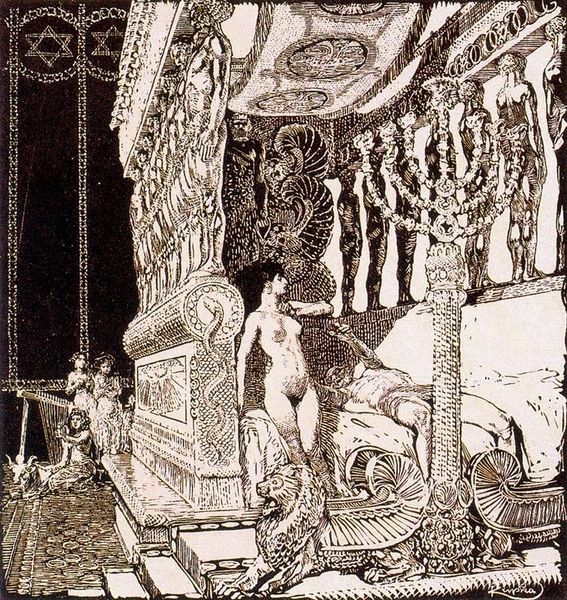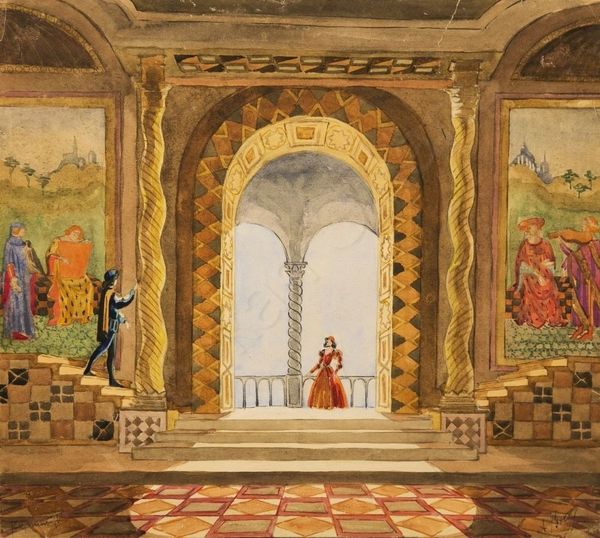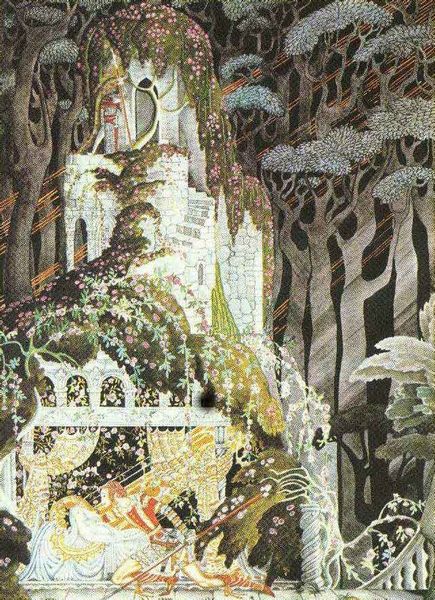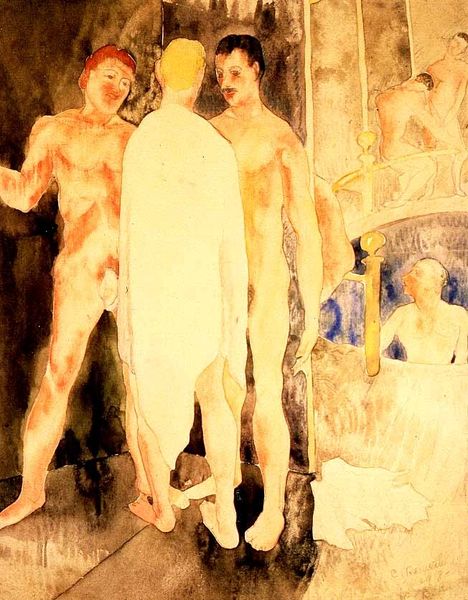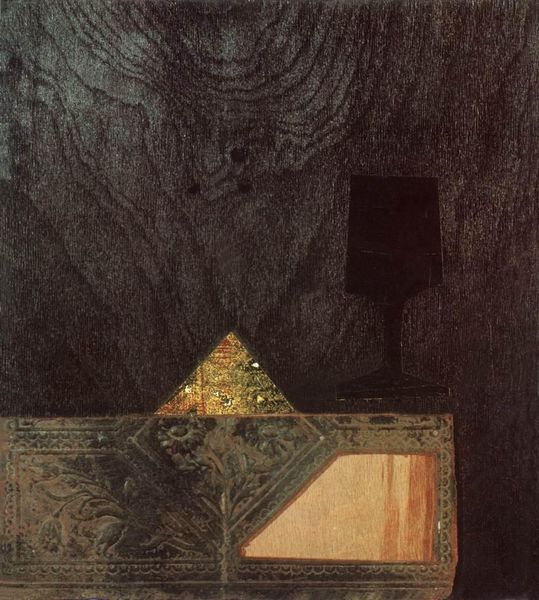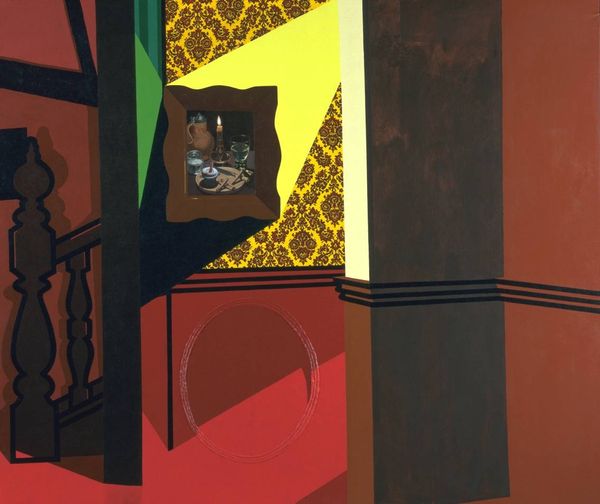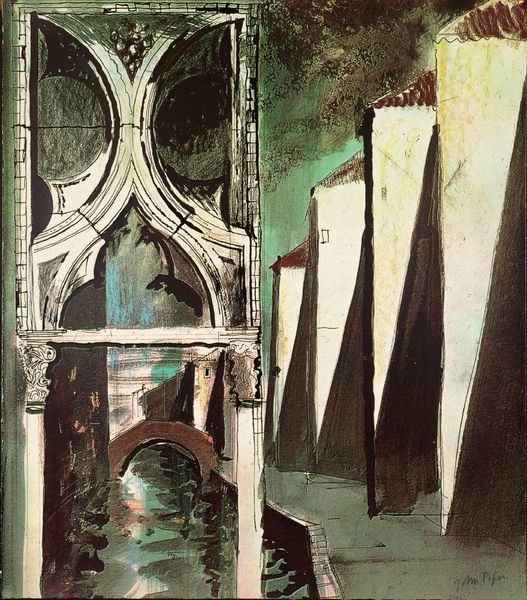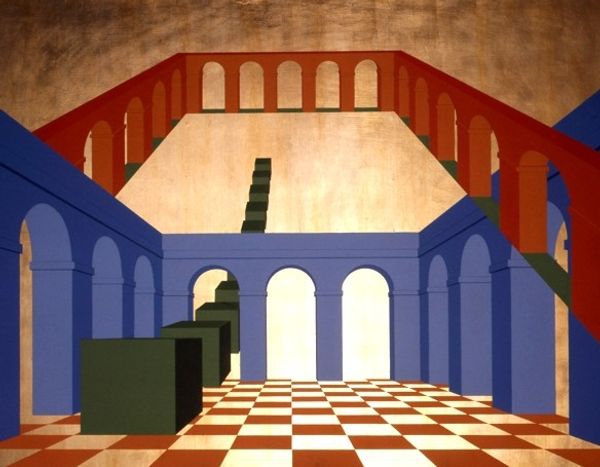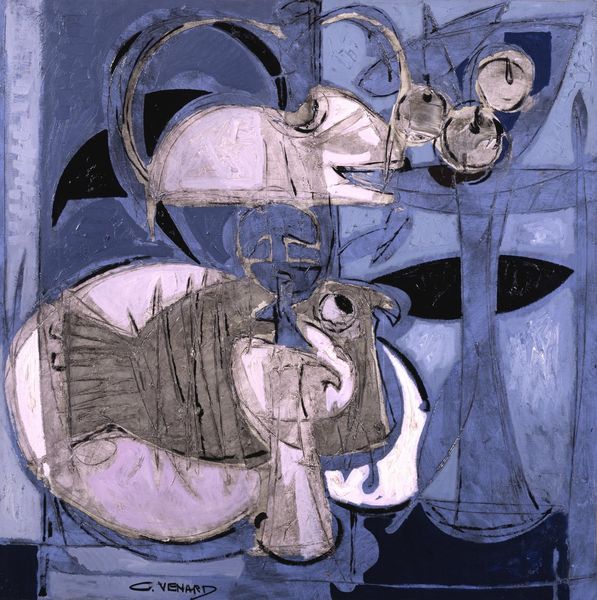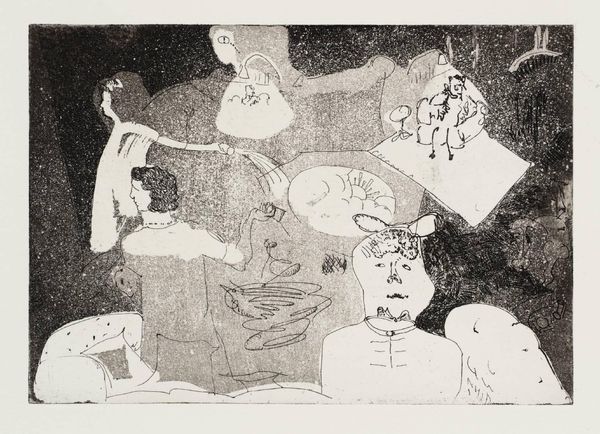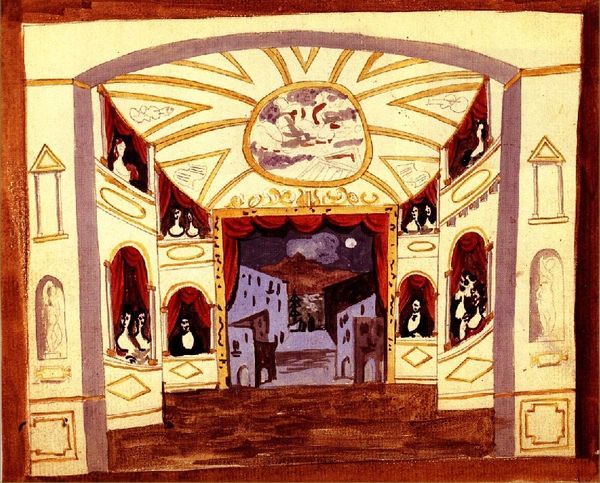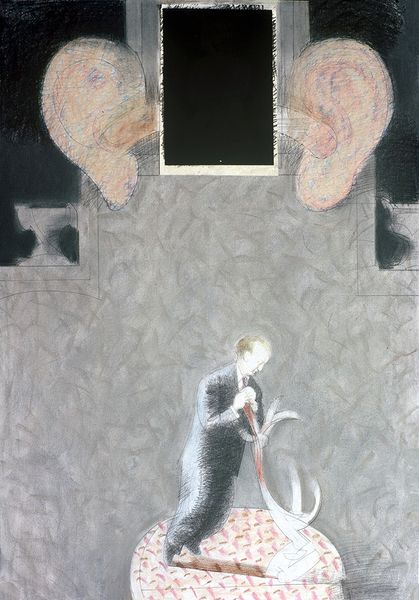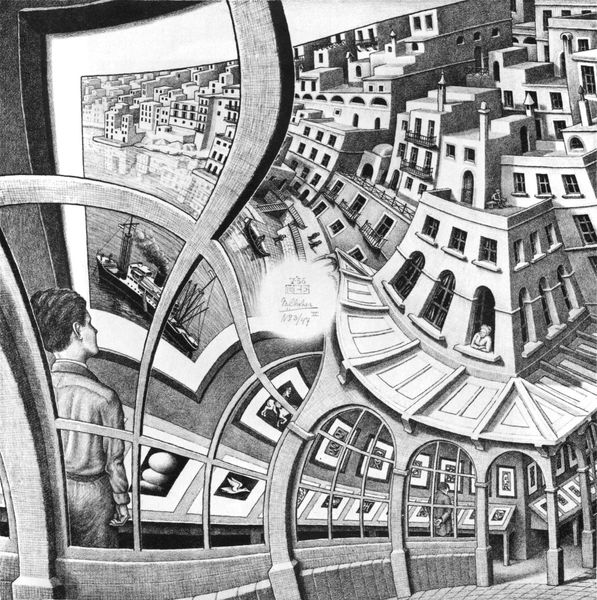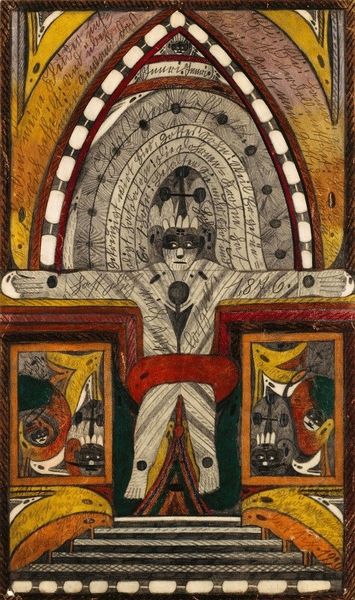
drawing, paper, ink
#
portrait
#
drawing
#
figuration
#
paper
#
ink
#
geometric
#
line
#
cityscape
#
surrealism
#
modernism
Copyright: Public domain
Curator: Here we have Petre Otskheli's 1936 drawing, "Sketch for 'Winged Painter'". It's executed in ink on paper. What strikes you about it? Editor: Initially, I find the composition unsettling. There’s a tension between the classical architectural elements and the almost dreamlike figures. The somber colors reinforce that sense of unease, doesn't it? Curator: Indeed. Otskheli was working during a period of intense political upheaval in the Soviet Union. His work often subtly critiques the grand, monumental style favored by Stalinist architecture through surrealism and the grotesque. Editor: You can certainly see that critique emerging through these almost ghostly figures lining the staircase. Are they caryatids? They feel both supportive and suffocating at the same time, mirroring a state trying to support but in fact restricting artistic freedom. And what about the flowers the figure in the foreground holds? Is that an offering, a sign of compliance, or perhaps a symbol of fragile beauty within a brutal regime? Curator: Interesting observation. These bouquets can also symbolize the individual's fading autonomy and desire to conform when faced with state-sponsored control of public spaces and creative endeavors. Otskheli experienced significant pressure from Soviet authorities, who viewed many avant-garde styles with suspicion. This can even be seen as a modern cityscape portrait— a genre Otskheli worked in—expressing something important that needs deciphering through semiotics and the use of the visual lexicon from the past to create tension and discussion in the contemporary public. Editor: Right, the pressure for artists to conform during that time was immense. This artwork resonates beyond its immediate historical context, doesn’t it? The question of artistic integrity versus external demands, it's a struggle that remains relevant today. It's the politics of display that we need to always consider, the state-approved, or "curated", artwork with agendas versus subversive commentary from those that disagree. Curator: I completely agree. Otskheli’s sketch serves as a powerful reminder of art's capacity to embody complex social and political anxieties, turning the public spaces of creative work and consumption into a theater of socio-political negotiation. Editor: Yes, and it demonstrates how even a preliminary drawing can provoke critical inquiry into issues of freedom, expression, and societal control.
Comments
No comments
Be the first to comment and join the conversation on the ultimate creative platform.
